#Tetsujin 28 go
Explore tagged Tumblr posts
Text
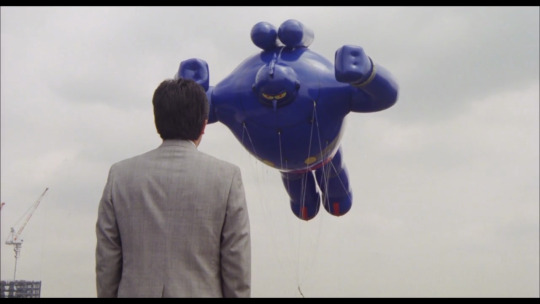



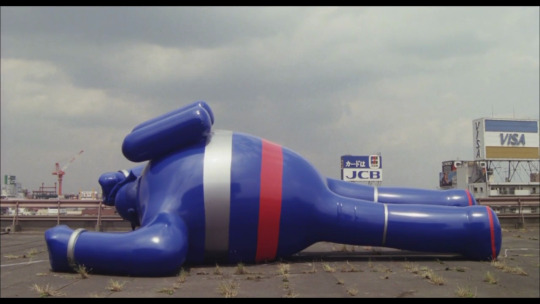
Akira Emoto
- Sky Cannot Be This Blue
1993
#Akira Emoto#柄本明#Sky Cannot Be This Blue#空がこんなに青いわけがない#Tomokazu Miura#三浦友和#鉄人28号#Tetsujin 28 go#japanese film#1993
188 notes
·
View notes
Text

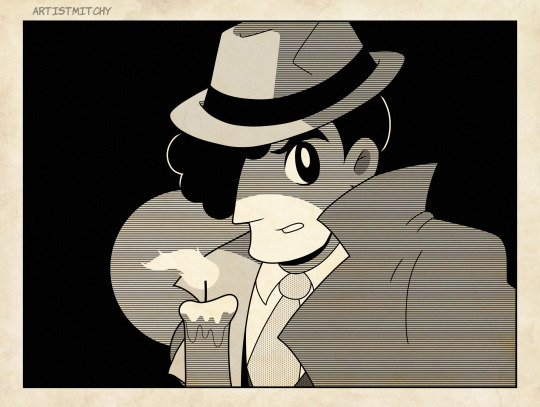
Mitsuteru Yokoyama style study, featuring Kenji Murasame. I wasn't sure which version I liked better, so I'll post both.
I used this screenshot from the Giant Robo OVAs for reference:
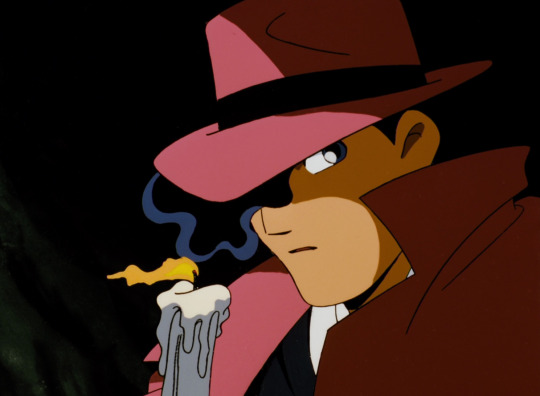
#Giant Robo#ジャイアントロボ#Giant Robo OVA#ジャイアントロボ OVA#Giant Robo The Animation#ジャイアントロボ THE ANIMATION#Giant Robo The day the earth stood still#Tetsujin 28#鉄人28号#Tetsujin 28 go#Tetsujin 28 gou#Kenji#Kenji Murasame#Mitsuteru Yokoyama#横山光輝#My art
27 notes
·
View notes
Text
Literally actually nobody:
Mitsuteru Yokoyama: What if a walking barrel was a god (or a devil)
2 notes
·
View notes
Text
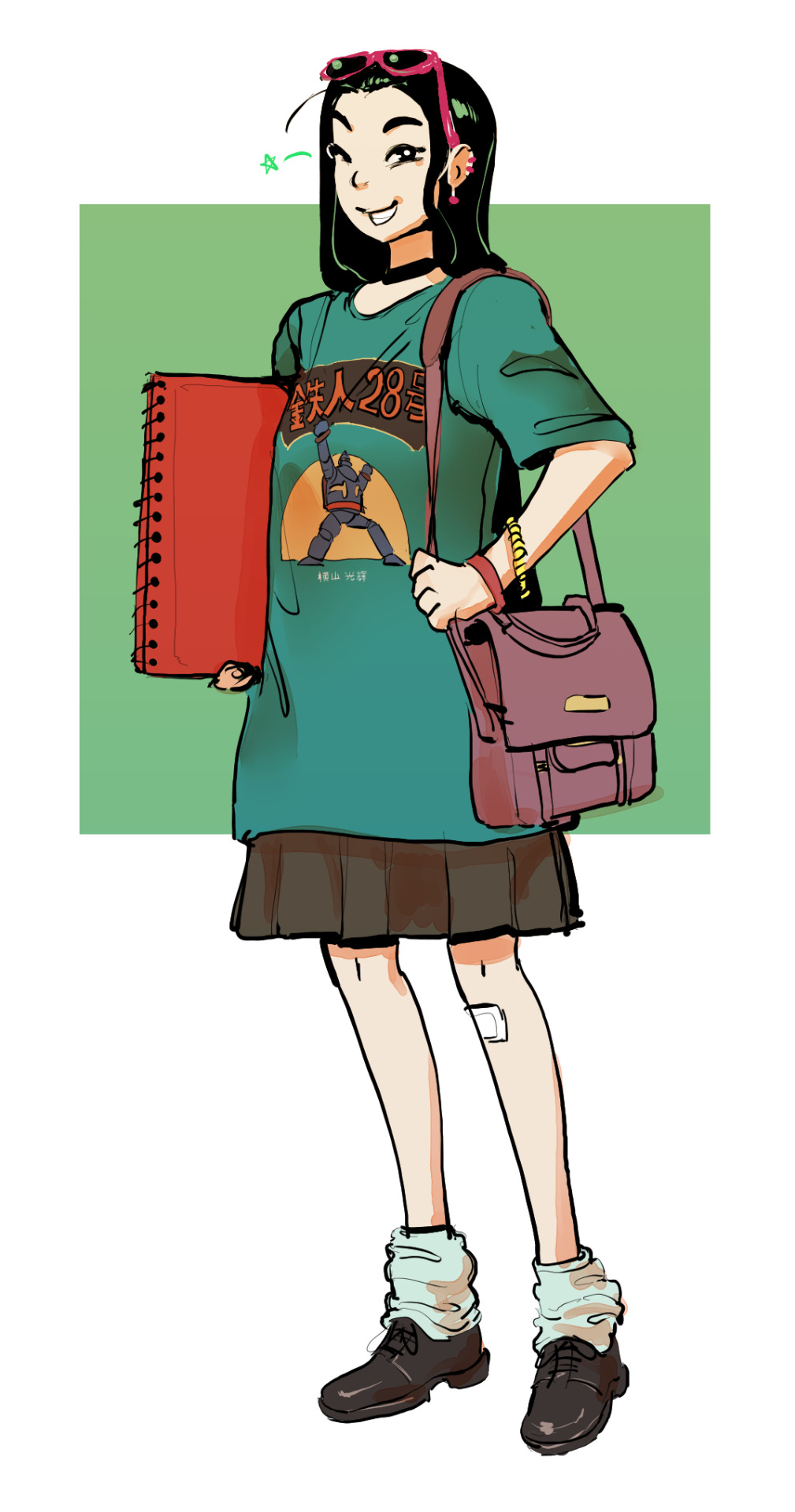
#hay lin#w.i.t.c.h.#adult au#she gets offended if you call tetsujin 28-go gigantor#and yes she's an akira the manga is better than the movie kinda gal
87 notes
·
View notes
Text

Tetsujin 28-go FX, 1992.
33 notes
·
View notes
Text
the tetsus!

#astro boy#mighty atom#tetsuwan atom#鉄腕 アトム#tetsujin 28#tetsujin28-go#鉄人28号#myart#art#digital art#sirfrogerson
59 notes
·
View notes
Text
Tetsujin 28-Go
Director: Yasuhiro Imagawa Year: 2024 Animation Studios: Genco, Palm Studio
#tetsujin 28#tetsujin 28-go#tetsujin 28-go 2004#tetsujin 28 2004#Giant robot#mecha#anime#Genco#Yasuhiro Imagawa#Palm Studio
4 notes
·
View notes
Text
Tetsujin 28-go (SF animation) J-pop
youtube
Mitsuteru Yokoyama's robot animation work is characterized by the appearance of neutral robots that are neither good nor bad. Whether it is good or bad depends on how the pilot operates it. This work is a typical example, as long as the main character handles the remote controller, "Tetsujin 28" is a robot of justice, but when controlled by evil, Tetsujin becomes an evil robot. This differs from Tezuka Osamu's work, in which robots have a conscience and are always righteous. I am a fan of Mitsuteru Yokoyama, and I liked "Tetsujin 28-go" more than "Astro Boy" which was aired at the same time.
鉄人28号(SFアニメ)J-pop
横山光輝のロボットアニメ作品は、善悪どちらでもない中立的なロボットが出るのが特徴。操縦する者がどう操作するかでその善悪はどうにでもなる。この作品はその典型で、リモートコントローラーを主人公が扱う限り「鉄人28号」は正義のロボットだが、悪が操作すると、鉄人は悪のロボットになる。ロボットに良心があり、常に正義であるとする手塚治虫作品とはその辺が異なる。私は横山光輝のファンであり、同時期に放映された「鉄腕アトム」より、「鉄人28号」を、より好んだ。
#Tetsujin 28-go#SF#animation#J-pop#Babylman#Mitsuteru Yokoyama#Astro Boy#Whether it is good or bad depends on how the pilot operates it.#Youtube
6 notes
·
View notes
Text

Tetsujin 28 Flying Saucer (Nomura, 1964)
The Tetsujin 28 Flying Saucer, released by Nomura in 1964, is a classic tin toy inspired by the beloved anime Tetsujin 28-go, which first aired in 1963 and captivated children across Japan.
77 notes
·
View notes
Text



Attack from the cross gang! 🔺🔥
#Tetsujin 28#Tetsujin 28 Go#Tetsujin 28 Gou#Tetsujin#鉄人28号#Monster#Mistuteru Yokoyama#横山光輝#Vintage manga#Vintage anime#My art
23 notes
·
View notes
Note
Recommend me something with giant robots that really encapsulates the giant robots media experience. Not necessarily something good; the best representative sample. I trust your judgement.
This is kind of hard to answer, as the giant robot experience is kind split down the middle into two broad categories.
The first flavor is military Scifi, this is usually given the moniker "Real Robot" because it leans more toward hard scifi and the idea of the mech as an actual machine with mechanical and logistical concerns. For my money the best taste of this type of story is original Mobile Suit Gundam from 1979. It's kind of the originator of the entire Real Robot conceit.
Gundam, and another work by it's director, Yoshiyuki Tomino, Space Runaway Ideon, were both major Influences of Neon Genesis Evangelion, which is not really a typical "real robot" show (in fact it's often more like Ultraman than mecha), but Eva is extremely influential on the genre and there's a whole generation of shows that are either responding to it or ripping it off.
The second flavor is what's generally called "Super Robot". Super Robot stories are classically Saturday Morning cartoons, complete with bright colors and flashy super hero style brawls and big special attacks whose names get screamed out before they're executed. The OG Super Robot is Mazinger Z, and both it's manga and anime are worth looking at, but for my money the best Super Robot experience is The Legendary King of Braves: GaoGaiGar. It's a perfect Saturday morning cartoon style mecha with a lot of charm and good production. The major caveat with it is that it uses an obscene amount of strobe effects that make it hard to actually look at the action scenes sometimes. Serious Epilepsy warning for that show.
Super Robot has also evolved in later years into more of a high octane action joint, Gurren Lagann is the best known example of this style of Super Robot, but for my money the best in this style is one of Gainax's earlier works, Gunbuster. It's just as high octane as it's little brother and has genuinely incredible animation.
There's also a sub-set of mecha I call "Boy and His Dog" mecha, which typically focus on a big meandering robot companion to a young boy, with a focus on coming of age type stories. The original of these is Tetsujin-28 (which is also arguably the first true mecha), also known as Gigantor in the west. There's a 2004 a anime that reimagines the story as an examination of post world war II Japan and it's pretty good. My favorite of these is Giant Robo: The Animation, which is also just my favorite work of mecha genre stuff period. Its very well animated and captures a strong pulp adventure vibe.
Alright so I've yet to actually give you an answer to this ask, I've just kind of rambled about mecha, but I wanted to lay some groundwork. I'm gonna list a lot of stuff below but the main touchstones I'd reccomend to get the taste of the genre you're looking for are the works listed under anime. The rest are just further reccomendations of things I like. Sorry about my chronic long windedness.
Manga:
- Mazinger Z by Go Nagai
- Getter Robo by Ken Ishikawa and Go Nagai (didn't mention this one above but it's about as classic as Mazinger. I reccomend the manga because none of its adaptations really capture the energy of the manga)
Anime:
- Mobile Suit Gundam (1979) (there's a lot of gundam out there and a lot of debate about where to start. The original show is the best starting point in my opinion, especially in this context)
- Neon Genesis Evangelion (1995)
- Gunbuster (1988)
- Legendary King of Braves GaoGaiGar (1997) (mind the epilepsy warning. If the strobes are a problem try Brave Express Might Gaine, Combattler V, or the Mazinger Z anime)
- Giant Robo: The Animation (1992) (also called Giant Robo: The Day the Earth Stood Still)
- Macross: Do You Remember Love? (1984) (film adaptation of the TV anime Super Dimension Fortress Macross, I think the movie is better than the show.)
- SSSS. Gridman and SSSS. Dynazenon (these two shows are just really good so I'm sneaking them in here)
Video Games:
- Armored Core 6: Fires of Rubicon (you can give any Armored Core a try this is just the most recent one)
- Heaven Will Be Mine (visual novel. It's a favorite of mine)
- Super Robot Wars 30 (a turn based strategy game, SRW is a massive crossover of tons of different mecha shows. 30 is the easiest of the series to get in the US. SRW is pretty beloved in the mecha fandom)
Tabletop Games:
- Lancer by Massif Press
- BattleTech by Catalyst Games (BattleTech is the one solidly American mecha franchise which makes it pretty unique. it has a complicated relationship with its Japanese influences)
Novels:
- Iron Widow by Xiran Jay Zhao (cool feminist mecha story that draws heavily upon, and reimagines, a lot of traditional Chinese culture, literature, and historical figures)
- Titanicus by Dan Abnett (this is a Warhammer 40k novel, but it's an old fav of mine. It's focused on the giant Titan mechs of that setting and it was my intro to 40k and sparked my interest in mecha)
Podcasts
- Friends At the Table: COUNTER/Weight (Friends at the Table is a great actual play podcast and COUNTER/Weight is a really fun mecha focused campaign of there's.)
- Mobile Suit Breakdown (great companion podcast for the Gundam franchise if you want more historical and cultural context and analysis for the various shows)
#mecha#mecha anime#mazinger z#getter robo#giant robo the animation#mobile suit gundam#gaogaigar#gunbuster#lancer#heaven will be mine#armored core#battletech#gurren lagann#iron widow#neon genesis evangelion#friends at the table#mobile suit breakdown
53 notes
·
View notes
Text
my sister looking at an old sailor moon website in 2003 for paper dolls and finding outdated information on when it was airing was what kickstarted my full descent into anime good times






#maybe its 4AM???#i had watched sailor moon back in 1998-99#and got excited that it might be on tv again#so go to CN at 4pm#its not on#my weird brain is like#anyway#its summer so i wake up at 4am the next day and sneak downstairs#sailor moon is not on#but case closed/detective conan#meitantei konan is#i like it#since i'm awake already i stay up and see lupin the 3rd and tetsujin 28#so next day#i wake up a little earlier to catch the beginning of the episode#catch the end of whats on before#its inuyasha#i like that#eventually family fixed the vcr so we could record them so i didn't have to wake up before the sun#this all happened when i was 12#sailor moon#paper dolls
13 notes
·
View notes
Text
Icebox Intro!

I am here to ramble a bit about my headworld today. Sorry in advance. XDD
I have a headworld that’s heavily inspired by crusty old sci-fi mangas like Astro Boy, Tetsujin 28, Cyborg 009, Giant Robo, etc. It’s become one of my favorite things to work on in my spare time and it’s very, very dear to my greasy lil heart. I’ll be primarily babbling about it on this blog, so I figured I oughta introduce it first!
I’ve taken to calling this headworld “Icebox”, and it takes place in a retrofuturist, robot-filled version of the 1960s. The very boiled down premise is; A hippie-hearted merc and her giant robot buddy go on globetrotting adventures while on the run from the evil paramilitary; SUPERIOR.
The main protagonists are Frankie and D-214 : November Witch!


Nov’s a totally autonomous robot with her own free will and emotions. She isn’t pilotable and she doesn’t have a remote control. In fact she’s a stubborn, bitchass mule who only sometimes listens to Frankie. XD Has a problem with authority and WILL make it everybody else’s problem. That being said, once you get past her big bad bitch front you’ll find she’s surprisingly sensitive and compassionate.

Frankie’s an upbeat spitfire of a freelance mercenary who would much rather be your friend than kick your ass. But if you insist she will kick your ass. XD Frank set November free from her unhappy containment by SUPERIOR, and the two have been best friends ever since. They’ve also been on the run ever since. It goes without saying that SUPERIOR’s pretty pissed this crazyass lil nobody ran off with their expensive nuke with fists.
In their adventures, the gals deal with enemy robots, mercs and other threats sent by SUPERIOR to recapture Nov, monster-of-the-week style.

#oc#ocs#headworld#robot#giant robot#mech#mecha#character design#original character#art#1960s#retro#retrofuturist#scifi
20 notes
·
View notes
Text
G Gundam Prelude: The Real Robot vs Super Robot Debate
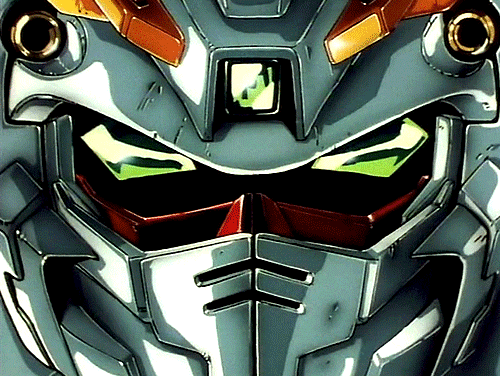
So before I begin talking about Mobile Fighter G Gundam, I'd like to take a minute to preface that conversation with a companion piece of sorts. This involves the nature of how the mecha "genre" of anime is divided into two subgenres, and how this subdivision (*synth and bass solo play at the same time*) is often used as a sort of dick-measuring contest by fans to argue that their preferred genre is better than the other.
Tetsujin 28-go, Mazinger Z, and the "Super Robot"

To understand the two sub-genres, we first need to understand the general history of the mecha. Technically speaking, our story really starts with Osamu Tezuka's Mighty Atom (Astro Boy in the west), but the giant robot style of mecha would not appear in earnest until Mitsuteru Yokoyama's Tetsujin 28-go (Gigantor in the west) and Go Nagai's Mazinger Z. Tetsujin and Mazinger would go on to codify a lot of the tropes common to a lot of these early robot series alone. If it wasn't either of those two, chances are likely Ken Ishikawa's Getter Robo will have you covered.

These so-called "Super Robots" were known for their superhero-like power sets. They were usually powered by either nuclear power or a fictional power source such as Photon Energy or Getter Rays. Almost every single robot in these stories were made with some sort of Super Alloy (or Chogokin), and each super robot had a whole arsenal of weapons, including but not limited to swords, axes, drills, lasers, and, of course, the rocket punch. These super robot series would dominate a lot of Japanese television for most of the 70's. But behind the scenes, one man would be forging his own path. And at the end of the decade, he would release a show that would turn the canon of mecha stories on its head.
Gundam, VOTOMs, and the "Real Robot"
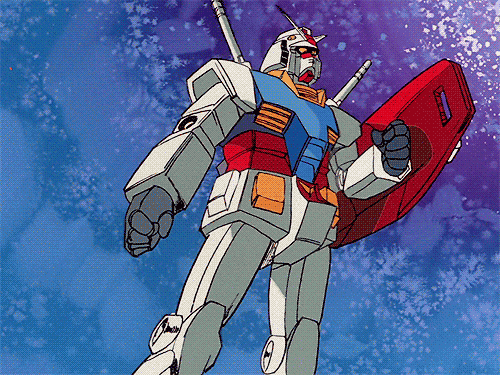
In 1979, the anime series Mobile Suit Gundam would air on Japanese television for the first time. This is one of the many mecha series directed by anime legend Yoshiyuki Tomino, and follows a direct lineage from his other works such as Brave Raideen, Zambot 3, and Daitarn 3. Gundam, however, would herald a new style of mecha stories thanks in part to it ditching a lot of the more fantastical elements of its "super robot" forebears in favor of a more grounded war story. These would be the so-called "real robot" style of mecha stories, and would further be codified by Ryousuke Takahashi's first two series, Fang of the Sun Dougram and Armored Trooper VOTOMs.

The "real robots" were a hard departure from their super robot brethren in that they were grounded in reality. Gone were the super alloys and the fantastical weapons, which were now replaced with weapons similar to that of a modern military. More importantly, the stories were now about wars, not with aliens as the antagonist, but other people. Humans. These stories would dominate a lot of the 80's, though the more traditional robots of the 70's would still be around as well.
There's just one problem with the term "Real Robot." The realism doesn't come from the machines themselves.
The Realism of Really Real Robots (It's Not What You Think It Is)
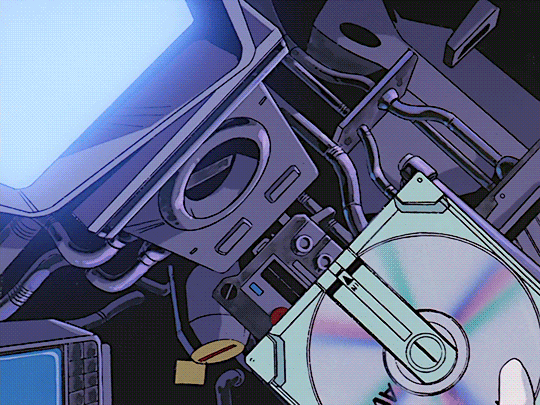
(Wanderer Not Mention Patlabor Speed Run [IMPOSSIBLE])
One of the issues with the term "real robots" is the fact that the realism in most "real robot" shows does not necessarily come from the robots themselves. Take blog favorite Patlabor, for example. Part of what makes the Labors as realistic as they are is not necessarily due to the imagined mechanics behind these machines. It's how the existence of these giant machines changes the lives of the characters. It's little things like how having a special police division that's devoted to Labor crimes is a bit of a money pit, or how SV2 has constant insurance problems due to the fact that Division 2, even in their best moments, are just as destructive as the people they're supposed to stop.
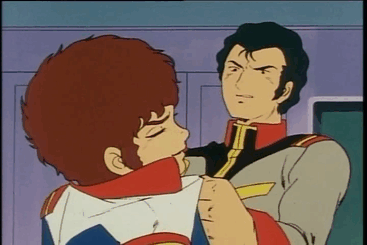
Or take the original "real robot" series, Mobile Suit Gundam. The realism does not lie in the design of the RX-78-2 Gundam. The realism comes from the One Year War and how it affects all of the characters. We can see this in how badly it affects the Gundam's pilot, Amuro Ray, as the poor sod of a teenager basically develops PTSD throughout the original show's run. And it's not just Amuro that's under a lot of stress. The infamous Bright Slap happens not only because Amuro refuses to get back into the Gundam, but because White Base captain Bright Noa (who's 19, by the way) is also at his wit's end. Never mind the fact that the slap makes everything worse.
So What Does This Have To Do With G Gundam?
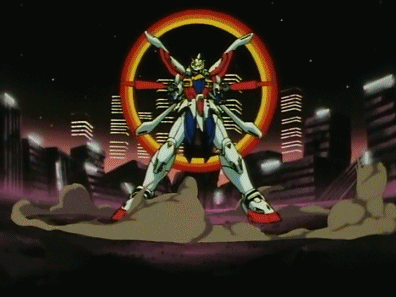
Everything. There's this idea that being a "real robot" series is what gives Gundam its bite and that G Gundam spits in the face of Gundam's original vision by being a hot-blooded "super robot" anime. There's just a couple of problems with that line of thinking. First, it's insulting to the series to say that it has nothing worthwhile to say. Y'know, G Gundam. The series that opens with the Gundam Fight (the Future Century replacement for traditional war) making its way to a ruined Rome, where the poor people who could not afford to leave for the space colonies are panicking as the Gundams literally crash onto their homes. The series where some of the last dialogue of the series is how, even after defeating the imminent threat that was the Devil Gundam, there is still work to be done when it comes to fixing the world, namely by finding a more sustainable replacement to the Gundam Fight. This doesn't even touch on the fact that all of the nations of the world join forces to face an threat that could wipe out all of mankind.

Second, and the part that I think is more insidious, is the idea that G Gundam is a lesser series because it went for more of a classic robot anime vibe as opposed to the serious war story that Gundam is known for. I say this is insidious because it not only ignores the fact that Gundam had just come off of the heels of the extremely depressing Victory Gundam and needed a bit of a palette cleanser, but it also implies that only so-called real robot stories can have serious storylines. God forbid something like Space Runaway Ideon exist, which is probably one of the most serious classic, pre-Dougram robot series out there, or Combat Mecha Xabungle, which is a really goofy but technically a "real robot" series.

This is also related to the idea that G Gundam is just "dumb fun." This line of thinking I can understand, because let's not kid ourselves here. While I wouldn't call this series dumb, G Gundam is kind of known for being insane (but in a good way). What makes this take just as grating is when a similar series can get away with a similar style of story just because it's not related to an existing franchise like Gundam. A series like, oh I don't know, Tengen Toppa Gurren Lagann. And that's a series that's often treated as somehow being different from most other mecha shows because "it's about the characters." Gurren Lagann is one of those shows, and people often treat it like it's a literary masterpiece while G Gundam, which I'd argue is one of the former's progenitor series alongside Getter Robo and GaoGaiGar, is treated as B-movie schlock. It's not, and I hope you'll join me when I dive into the insane masterpiece that is Mobile Fighter G Gundam.
#anime and manga#mobile fighter g gundam#tetsujin 28#mazinger z#mobile suit gundam#fang of the sun dougram#armored trooper votoms#patlabor#space runaway ideon#combat mecha xabungle#tengen toppa gurren lagann#real robot#super robot
37 notes
·
View notes
Text
I watched Ultraman Rising today, and while it is fantastic -go watch it first chance you get- something that bugs me is that during the epilogue; it shows Gigantron without her armor, meaning that she isn’t a cyborg, but in an earlier scene, her chest plates open up and a bunch of cannons extend out. That wouldn’t be possible without her chest cavity being hollowed out to make room, and thus she would need to be a cyborg for that scene to make sense.
Also her name is weird; “Gigantron” the word “tron” feels distinctly robotic to me, so an organic dragoness having it as part of her name just seems odd. It’s also nearly identical to “Gigantor” the english name for Tetsujin 28-go.
9 notes
·
View notes
Text





youtube
youtube
Testujin 28-go (2005) by Robo Creation, Vstone, and Robo-Garage. Tetsujin 28-gō (鉄人28号 or "Iron Man No. 28") is a 1956 manga by Mitsuteru Yokoyama about the adventures of Shotaro Kaneda, who controls a giant robot named Tetsujin 28.
"In response to my proposal to create Tetsujin as an actual robot, President Yamato of Vstone, who accepted the role of publisher and project leader, said, "If we can get the consent of the copyright holder, let's try." Yes, robots are produced in small quantities, and there is no relationship with the copyright holder, and the rights to famous characters are often held by major clients, so it is difficult to imagine that it will be easy to obtain the consent of the copyright holder. I was in a situation. I immediately created a project proposal and entered into negotiations with the copyright owner in a situation that was more like a face-to-face encounter than a proposal. After several exchanges, the copyright owner said, "It is difficult to conclude a new contract for such a small project." Those words made me freeze up in an instant. However, after that, "the live-action version of Tetsujin 28-go will be shown next year. Would you like to tie up with us for that promotion?" It sounds like a dream. The project, which simply wanted to turn Iron Man into an actual robot, was praised as an interesting way to create a buzz for the movie. From my point of view, on the contrary, this movie exists to promote robots. However, there was one "absolute condition" that had to be carried out. Iron Man's appearance has to look like what is shown in the movie. My dream was not to be the original Ironman, but to be a "modernized Ironman." If you accept this "absolute condition", you will have the best environment for planning. Of course, I readily agreed, and we were able to commercialize the idea." – Susumu Kanei, anime version Tetsujin, Robo Creation.
24 notes
·
View notes